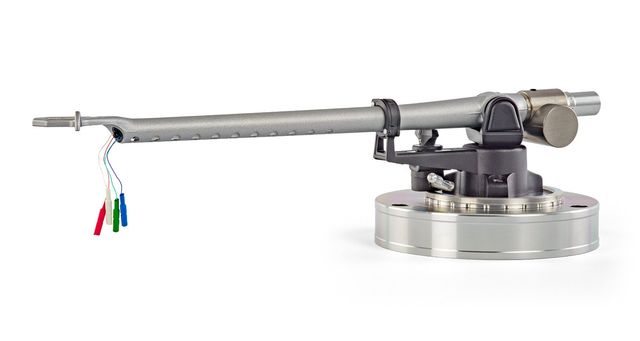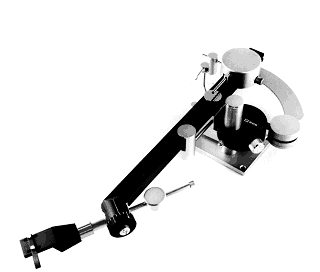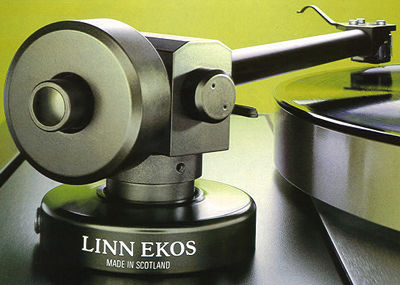If, as LeCorbusier put it, “design is intelligence made visible,” then Roy Gandy, the Rega RB300’s designer, has a few extra brain cells. This tonearm is a seminal design that was initially introduced in the summer of 1983. Its tracking weight spring can be chastised for adding a tinge of hue. The RB250, on the other hand, did away with it entirely, eliminating one of the model’s greatest flaws. You may criticize its internal wiring, but there wasn’t much wrong with it for the (then) £90 retail price. Of course, replacing the conventional bellwire is simple, and the results are very promising.
The counterbalance was the main issue. For that 1983 arm, the original Rega plastic end stub was absolutely enough, but the RB300’s ‘chassis’ is capable of so much more. The Michell TecnoArm, which cost £346 and was released in 2000, addressed all three issues: bearing housing (RB250 chassis), wiring (Moth Incognito wiring), and end stub. A nicely hewn metal stub is installed in place of the ugly plastic, on which a counterweight carrier slots.
The counterweight is bolted to this. Because two weights are provided, a two-piece configuration is necessary. The one that caters for cartridges weighing between 13g and 6g is heavier than the other. The other, smaller affair ensures that cartridges are evenly distributed between 6g and 3g. You screw up the tracking force adjuster to the desired weight once you’ve picked the proper counterweight for your cartridge and attached it to the carrier. After you’ve completed this, tighten the fastening screw that connects the counterweight to the new end stub.
If it appears that everything is complicated, it isn’t. It’s so elegant, in fact, that you’ll wonder why it didn’t happen twenty years ago. The counterweight(s) also have the advantage of being underslung, similar to motorcycle panniers, resulting in a lower centre of gravity than the typical Rega counterweight (allowing the arm to ride record warps more authentically while putting less strain on the cartridge cantilever’s suspension). There’s more, because the TecnoArm comes with the most beautiful VTA adjuster you’ve ever seen for this arm. It’s fantastically basic and finely machined from aluminium, so it wouldn’t seem out of place on a Michell turntable. By the way, the end stub, carrier, and weights can all be purchased individually for roughly £100.
The TecnoArm sounded significantly better than the ordinary Rega RB250, especially on UB40’s Food For Thought, with the new Michell pouring out vast tracts of detail and a consummately tuneful bottom end that was both far tighter and better articulated than the stock arm. Where the ordinary Rega is drab, the vocals had tremendous depth and sheen. Percussion was really fluid, with a seductive, almost unipivot-like movement, but there was tremendous force when those kettle drums were slammed. The hi-hats were light and airy, with a lot of delicacy – the Moth cable is clearly doing its thing.
Indeed, the midband is where all the action occurs on Zero7’s Simple Things, with a far wider and more open soundstage and more confident image articulation. Female vocals, in particular, have a purity of tone that is a delight to behold: smooth, grain-free, and just on the pleasant side of neutral. De La Soul’s A Rollerskating Jam Named Saturday transports you straight to the mixing station. It has razor-sharp incision while also expertly tying all of the fresh details it brings to the party together. Image articulation and soundstaging were excellent, driving vocalists and other components of the mix right out of the speakers (which themselves virtually disappeared). If there was ever a budget tonearm that could ‘hear through,’ this is it.
That is the TecnoArm’s major feature. It sounds a lot like Michell’s turntables, whether by accident or design. It’s open and even, but confident and strong to a fault. How does it stack up against its competitors? I just had one question at the time of its release: why had it taken John Michell twenty years to come up with something like this?







